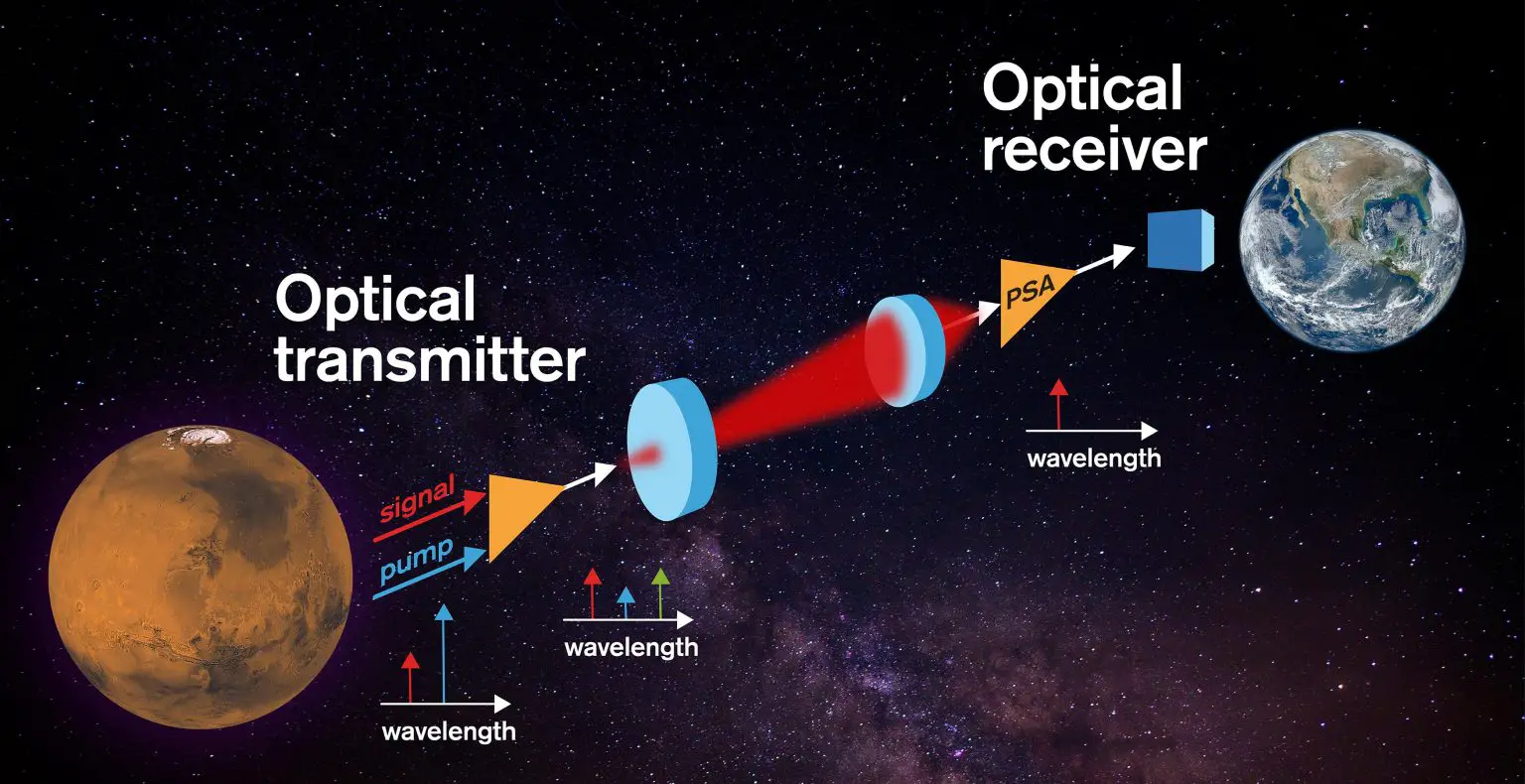The next big leap in communication is laser.
Lasers can be used for communication and they can protect satellites against hostile actions.
The next leap in communication technology is laser communication. The reason why NASA and other space organizations research things like laser communication is simple. Laser communication systems are immune to regular eavesdropping and jamming tools. Especially if the system uses a two-layer laser system where hollow laser rays protect data transmission ray is impossible to steal data from the data channel. The laser systems are more multi-use tools than just communication.
Lasers can also scan pollution from the high atmosphere. In recon satellites, the laser spectroscopes can search chemical compounds from aircraft and other vehicle exhaust gas.
The laser systems can also make gravitational measurements. And the Lidar systems can scan the orbital trajectories to find space debris, that can danger satellites. The power of the laser rays determines its use. It's possible to transmit information even from other planets by using laser rays. The thing that makes laser communication suitable for communicating with interplanetary probes is that natural electromagnetic radiation cannot disturb laser rays so easily as they disturb radio transmissions.
"An illustration of the new concept’s experimental setup. Credit: Yen Strandqvist/Chalmers University of Technology" The term PSA means Phase-Sensitive Amplifiers. (ScitechDaily/The Most Sensitive Optical Receivers Yet for Laser-Beam Based Space Communications)
"Scheme of the architecture for the planned Deep Space Optical Communications (DSOC) prototype to be flown on the Psyche mission." (Wikipedia/Deep Space Optical Communications)
In space probes every single sensor requires space increases the weight of those probes. The communication laser can also used for spectroscopic experiments. During the spectroscopic experiments, laser rays vaporize asteroids and the spectroscope sees the elements from that vapor.
The power of those interplanetary laser communication systems is very high. And if some satellite travels through the laser ray during data transmission, that laser can destroy the satellite. The difference between high-power laser transmission and ASAT weapons is that the last one's purpose is to destroy targets.
The laser systems can communicate over the walls by using mirrors where laser rays are reflected in the desired direction. The reflecting mirrors can make it possible to aim the laser weapon's rays at to target over the barriers. In some cases, the UFOs:s or flying saucers are the mirrors that aim the laser rays at targets behind the barrier.
The higher-power lasers can protect low-flying space systems against kinetic energy ASAT weapons. The high-power laser systems that are used for interplanetary communication are suitable for ASAT weapons. There are many ways to use lasers in those kinds of systems. The laser weapon looks like a little bit like an optical telescope. And it can used as a measurement tool. In those systems is the bottom laser and the same frequency auxiliary lasers that pump energy into that beam. This kind of system can turn multiple lasers into one target.
When the laser turns to weapon mode, it just increases its power. The high-power laser system can be in satellites. The system can involve many satellites that focus their lasers on one target. Or the laser can be ground-based. The laser-based anti-aircraft systems are anti-aircraft guns that lasers replace. If the laser system is powerful enough it can destroy satellites from different trajectories. And also ground-based lasers can focus their rays on one target.
https://www.jpl.nasa.gov/news/nasas-deep-space-communications-to-get-a-laser-boost
https://scitechdaily.com/5-fast-facts-nasas-deep-space-optical-communications-dsoc-experiment/
https://scitechdaily.com/light-speed-ahead-nasas-pioneering-leap-into-laser-data-transmission/
https://scitechdaily.com/the-most-sensitive-optical-receivers-yet-for-for-laser-beam-based-space-communications/
https://en.wikipedia.org/wiki/Deep_Space_Optical_Communications







No comments:
Post a Comment
Note: Only a member of this blog may post a comment.